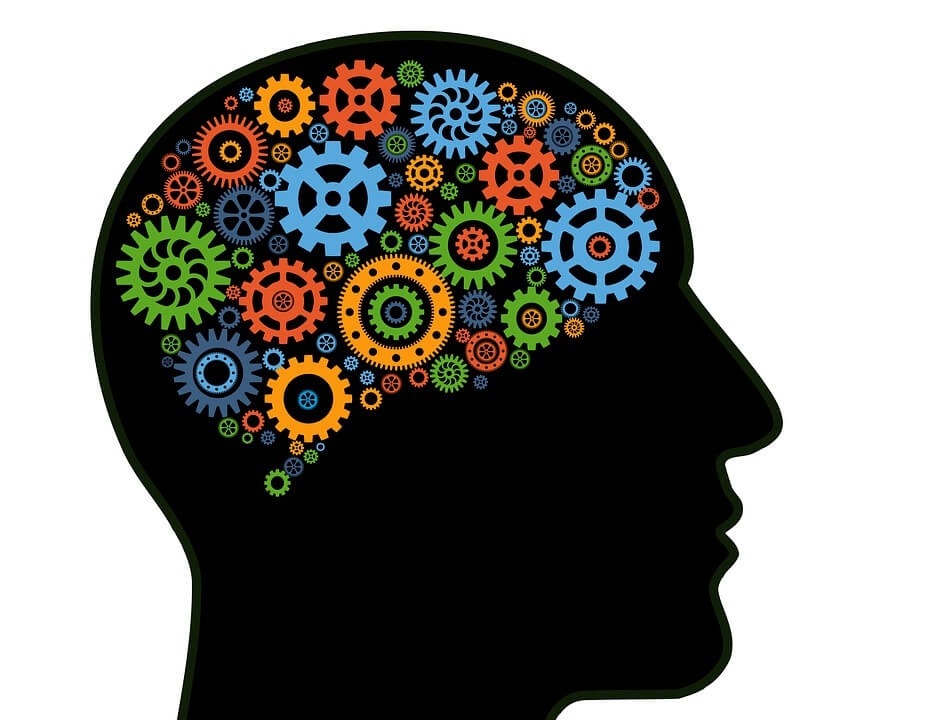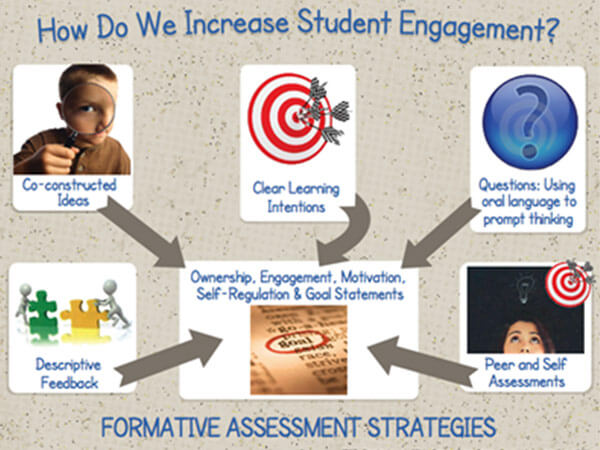Executive Function – Supporting Student Learning (2019)

This resource was created by a multi-disciplinary team from School District 71 and SET-BC and is grounded in evidence-based research and theory.
There are 4 Modules in this resource, organized in the following categories:
- Module 1 – Overview of Executive Function
- Module 2 – Core Competencies, Assessment Practices and Executive Function Skills in the Classroom
- Module 3 – Executive Function Strategies to Develop Students’ Personal and Social Competencies
- Module 4 – Executive Function Strategies to Develop Students’ Communication and Thinking Competencies.
Within each Module you will find an Overview of that focus area, references, other resources, connections to the New BC Curriculum Core Competencies, videos, and tip sheets and tasks cards for apps/ programs and strategies. As well, a link to resourceSET to access templates and examples to use with students.
Each module should take about 15 to 20 minutes to explore. Most offer a choice of various platforms and low-tech options. Although the modules have been numbered, they can be completed in any order.
Module 1 – Overview of Executive Function
- Overview
- Content
- Resources
In this module, we will examine the many facets of Executive Functioning and their importance in the development of our students’ skills.
Executive Function is an umbrella term for brain-based functions that involve cognitive control and self-regulation, all having to do with managing our internal resources in order to achieve a goal. Essentially, executive function describes the ability to get things done.
Having difficulties with aspects of Executive Function is complex. This is not considered a learning disability on its own. Rather, Executive Function skills are key to learning. Although deficits can be associated with students with diagnosed challenges, they can also be experienced by all students. These are skills that need to be taught.
Having well-developed Executive Function skills is critical to life success. We want to prepare our students with skills and attitudes that help them face challenges at school and throughout their lives. Communicating effectively, organizing materials, regulating emotions, problem-solving, managing multi-step tasks, and knowing how our behavior impacts others are skills we must nurture for life-long learning. The BC curriculum has changed, so classroom practice must change too. This involves shifting from content driven curriculum to competency driven curriculum. Teaching Executive Function skills is key to supporting this shift.
“One of the most effective ways of building Executive Function skills is by developing habits and routines that eventually become automatic. Building habits requires repetition, repetition, and more repetition.” (Cooper-Kahn and Dietzel, 2009, p. 18)
We can be proactive and use strategies and resources to address and support the diversity of Executive Function skills in our classrooms:
- Build a strong and positive climate that emphasizes the process of learning over academic performance.
- Make the learning destination explicit, and work with students to establish goals to get there.
- Nurture collaborative, proactive skill building, relationship enhancing classrooms.
- Create the conditions for student voice and choice.
- Provide timely, specific, understandable and actionable feedback.
- Self-reflect and adjust practice. Be responsive to students’ changing learning needs.
- Create the conditions for practice in a predictable, structured and supportive learning environment. (Frey et. al, 2018)
Module 2 – Core Competencies, Assessment Practices and Executive Function Skills in the Classroom
- Overview
- Content
- Resources
British Columbia’s New Curriculum Core Competencies are sets of intellectual, personal, and social emotional proficiencies that every student needs to develop in order to engage in deep, life-long learning. In this module we look at Executive Functioning within the context of these Core Competencies.
Executive Function skills enable students to achieve curricular goals identified within the core competencies. These include skills, strategies, and dispositions that help learners set goals, manage stress, stay healthy and active, regulate emotions, monitor progress, respect their own rights and the rights of others, and persevere in difficult situations.
Using Executive Function strategies described in Modules 3 and 4 alongside Assessment for Learning strategies in day to day instruction supports the develop of students’ Executive Function skills.
Five strategies that encompass Assessment for Learning and support Executive Function include:
- Clarifying and sharing learning intentions (i.e. core competency “I” Statements) and success criteria.
- Engineering effective classroom discussions through questioning.
- Providing and inviting descriptive feedback that moves learning forward.
- Activating students as the owners of their own learning.
- Activating students as instructional resources for one another. (Leahy et al, 2005)
Providing students with a clear sense of purpose is one of the most important steps to supporting learning and is often overlooked in the urgency to get the learning journey started (Moss, Brookhart, & Long, 2011). Imagine being coaxed onto an airplane to go on a journey without knowing where you are going, why you are going there, and how long you will be gone. Being subjected to these uncertainties would naturally feel uncomfortable. Yet, this is likely what many students experience when faced with lessons that have been launched without explanation of the intent, direction, or destination.
“The first thing students need to learn is what they’re supposed to be learning.” (Moss et al, 2011, p. 66)
Students have an important role in the assessment environment and are better equipped to be successful when they know what success looks like (Stiggins, 2009). Including Assessment for Learning strategies in day to day instruction supports Executive Function skills. We have linked Executive Function skills and strategies to BC New Curriculum “I” Statements in a visual table to facilitate understanding and implementation. See document ‘Competency Areas and Executive Function Skills’ under the Resource tab to review this table.
Module 3 – Executive Function Strategies to Develop Students’ Personal and Social Competencies
- Overview
- Content
- Resources
Personal and Social – Personal and social competency is the set of abilities that relate to students’ identity in the world, both as individuals and as members of their community and society. Personal and social competency encompasses the abilities students need to thrive as individuals, to understand and care about themselves and others, and to find and achieve their purposes in the world.
BC’s New Curriculum www.curriculum.gov.bc.ca/competencies
Students with Executive Function deficits can struggle with self-regulation and social skills, thereby affecting their ability to demonstrate personal and social competencies. Using Executive Function strategies can support students’ behavioural and emotional regulation and increase their ability to access the curriculum. When students are regulated, they are better able to learn (Shanker, 2012).
Adults play an important role in fostering, teaching, and modelling these skills. Students with lagging Executive Function skills can easily be mis-interpreted as being non-compliant. When students are under-performing or getting stuck, perhaps it’s not that they won’t, it’s that they can’t (Greene, 2016). Are we considering and acknowledging the complexity of skills required to accomplish a task or goal? As adults, it’s easy to overlook the time it takes for students to develop Executive Function skills.
Four types of strategies that foster personal and social competencies can be found under the Resources tab. These are The Zones of Regulation, Mindfulness Strategies, Cognitive Behavioural Strategies, and Metacognition and Self-Reflection Strategies. Please see the document ‘Competency and Executive Function’ for the 4 strategies (Metacognition, Cognitive Behavioural, Self Reflection and Mindfulness) under each strategy’s Resource list to review the table that links these strategies and executive function skills to BC New Curriculum “I” Statements.
Zones of Regulation
Mindfulness Strategies
- Competencies and Executive Functioning – Mindfulness Strategies
- Guide to Mindfulness Strategies Resources
Cognitive Behavioural Strategies
- Competencies and Executive Functioning – Cognitive Behavioural Strategies
- Guide to Cognitive Behavioural Strategies Resources
Metacognition Strategies
Module 3 Classroom Resources
Module 4 – Executive Function Strategies to Develop Students’ Communication and Thinking Competencies
- Overview
- Content
- Resources
- Video
Communication – The communication competency encompasses the set of abilities that students use to impart and exchange information, experiences and ideas, to explore the world around them, and to understand and effectively engage in the use of digital media.
Thinking – the thinking competency encompasses the knowledge, skills and processes we associate with intellectual development. It is through their competency as thinkers that students take subject-specific concepts and content and transform them into a new understanding. Thinking competence includes specific thinking skills as well as habits of mind, and metacognitive awareness.
BC’s New Curriculum www.curriculum.gov.bc.ca/competencies
Students with Executive Function deficits can struggle with communication and thinking, thereby affecting their ability to develop competencies in these areas. Using Executive Function strategies can help students develop habits that support their ability to plan, organize, manage time, and understand the world around them. When students are taught how to use and develop frameworks, they are better equipped to learn.
The development of Executive Function skills is linked to biology and experience (Dawson & Guare, 2018). We are born with the potential to develop these skills, but a number of psychosocial, biological, and environmental factors influence skill development. Adults can foster the development of students’ Executive Function skills by establishing supportive relationships and providing opportunities for activities that encourage connection, communication, collaboration, and practice. These are skills that can and need to be taught! As students’ Executive Function skills improve, their dependence on adult supervision, prompting, and support decreases; independence increases.
Typically, students develop Executive Function skills into their mid-twenties. However, there are many individuals whose Executive Function skills may develop more gradually than their peers for a variety of reasons. In every classroom, a wide range of Executive Function skills exists. As such, it can be worthwhile for teachers to explore class-wide strategies and resources to support the development of these skills for all students.
Two types of strategies that foster Communication and Thinking competencies can be found under the Resources tab. These are Future Thinking, and Schedules and Time Management. Please see the document ‘Competency and Executive Function’ for the 2 strategies (Future Thinking and Schedules and Time Management) under each strategy’s Resource list to review the table that links these strategies and Executive Function skills to BC New Curriculum “I” Statements.
Future Thinking
- 360 Thinking App Task Card
- Competencies and Executive Function – Future Thinking
- Implementation Ideas for the Classroom – Get Ready Do Done Strategies
- Implementation Ideas for Using Analog Clocks
- Tutorial – Future Thinking – Draw and Tell App
- Tutorial – Future Thinking
- Using Pic Collage with Executive Function Templates
- Using Pic Collage with the Block and Box Strategy
- Using Skitch with the Block and Box Strategy
- Using the Get Ready Do Done Template
Schedules and Time Management
- Competencies and Executive Functioning – Schedules and Time Management
- Implementation Ideas for Using Analog Clocks
- Using a Visual Schedule with a Student
- Using Guided Access on the iPad
- Using Outlook Tasks to Create To Do Lists
- Using Pic Collage with Executive Function Templates
- Using the Clock on iPad or iPhone to Support Time Management
- Using the Office 365 Outlook Calendar
- Using the Reminders App on an iPad
Module 4 Classroom Resources
- Get Ready Do Done (English)
- Get Ready Do Done (French)
- Schedules and Time Management
- First Next Then Templates
- Scripts with 1×1 Pictures
- Scripts with 2×2 Pictures
- Scripts with 8×10 Pictures
- Visual Schedules with 1×1 Pictures
- Visual Schedules with 2×2 Pictures
- Visual Schedules with 3×8 Pictures
- Visual Schedules with 4×4 Pictures
Resource Overview
Resource Topic
- Executive Functioning/Self Regulation

